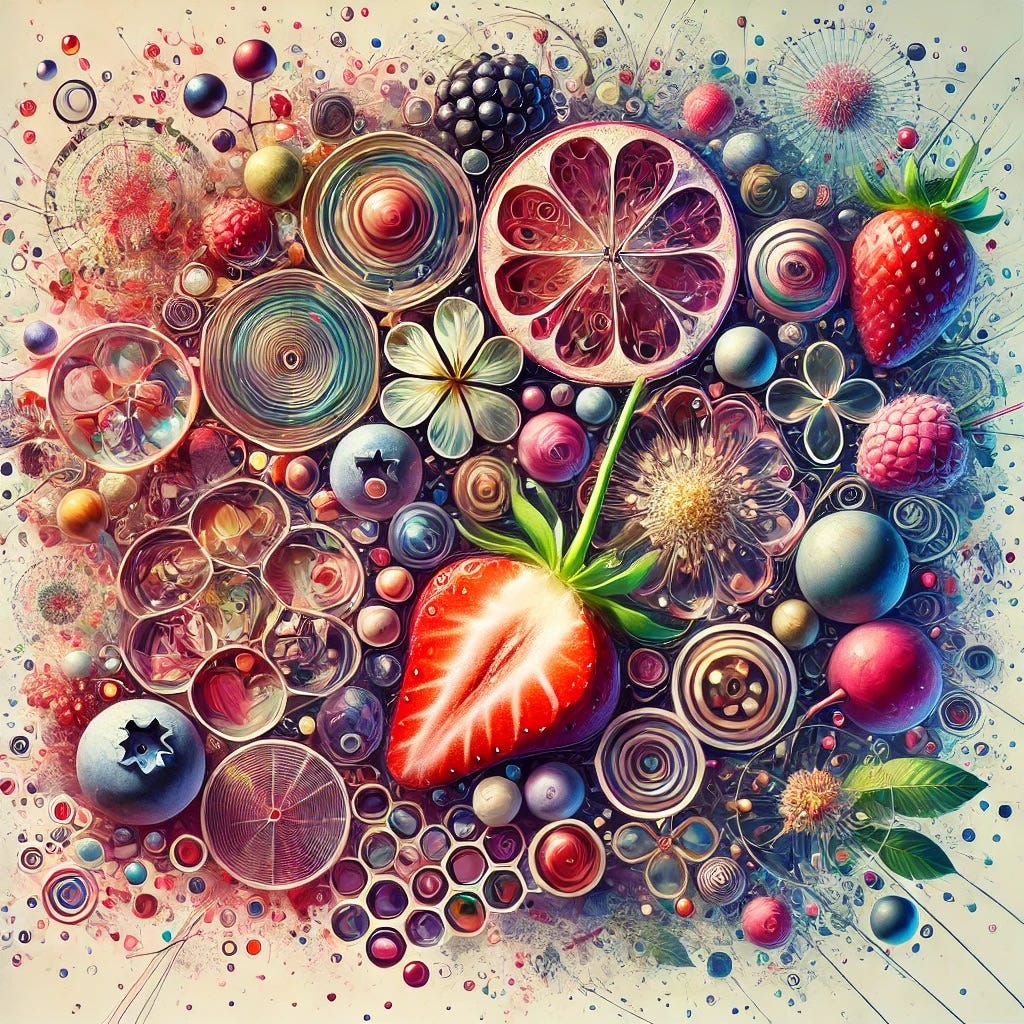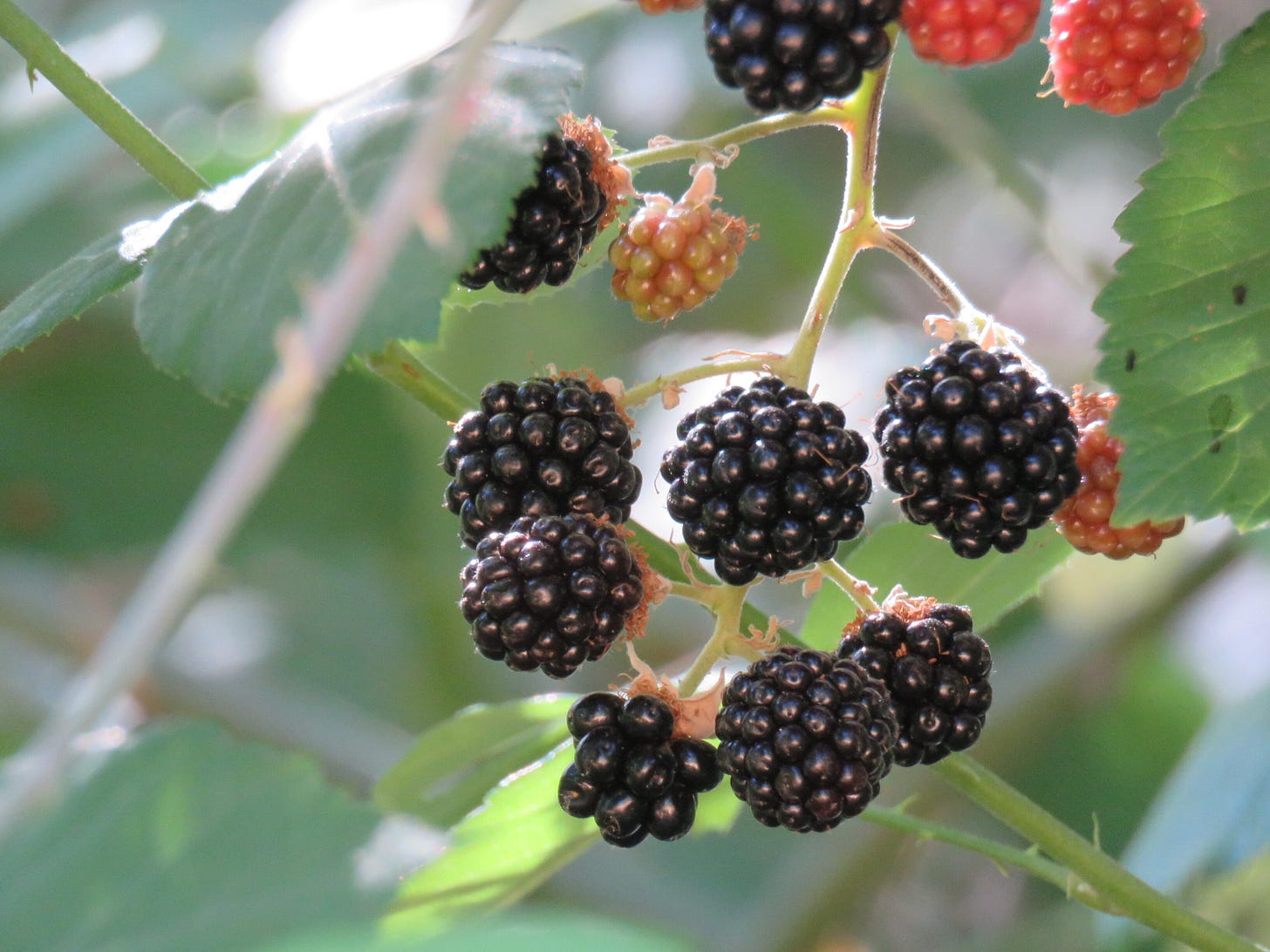NAPA VALLEY, Calif. — Recently the host of a new cooking show asked if a cranberry (the key ingredient in a cooking challenge) was really a berry. Her question piqued my curiosity. Although I like berries, my attention to them is usually limited to their use as a yogurt topping or dessert. After researching the topic, I learned that some fruits we refer to as berries aren’t berries at all, while other fruits we would consider very “unberrylike” are true berries.
This discrepancy seems to have arisen from the difference between our common use of the word and its botanical definition. Of Germanic origin, the word berry originally meant “grape.” Over time and through repeated usage, berry came to refer to any small, soft, juicy, colorful fruit that might be sweet or tart.
Botanical names and common names rarely match. After all, fruits evolved as a way for flowering plants to produce and distribute seeds. They had no clue how scientists would eventually classify them. As you might expect, a botanical definition is much more precise than a common name. Botanists don’t consider taste or appearance but rather how the plant’s flower and adjoining parts develop into a fruit.
In flowering plants, fertilization initiates both seed and fruit development. The ovule (the precursor to the seed), if fertilized by pollen, becomes a seed. The tissue surrounding the seed is the ovary. As the ovary matures into fruit, its wall thickens and differentiates into three distinct layers.
In order to achieve “berrydom,” a fruit must meet three criteria: First, it must have three fleshy and distinct layers. Second, it must have two or more seeds. Finally, a true berry develops from one flower containing a single ovary.
How do these criteria apply to strawberries, raspberries and all the other fruits we consider part of the berry kingdom? Raspberries, blackberries and strawberries are not from a single ovary, so they don’t fit the botanical definition of a berry. Their flowers have more than one ovary. Raspberries and blackberries are made up of multiple drupes, each drupe developing from an ovary and containing a seed. A strawberry is also an aggregate, but in its case the individual parts are called achenes and have seeds on the outside. The achenes are actually the fruit.
Although mulberries resemble blackberries, they are neither berries nor aggregate fruit. They are a multiple fruit. Unlike an aggregate fruit (from one flower with many ovaries), a multiple fruit comes from a cluster of flowers that develop into one fruit. Pineapples and figs are also multiple fruits.
To further complicate matters, berries are divided into subtypes. One subtype is citrus. An orange is the berry of a citrus plant. It is a subtype of berry called hesperidium. Other citrus fruits such as lemons, limes, grapefruits, clementines and kumquats are also examples of hesperidia. Unlike other berries, citrus fruits have distinct segments, juice-filled sacs and a leathery outer skin.
A second subtype of berry, pepo, includes pumpkins, watermelons, cucumbers and zucchini. In pepo, the outer layer of the fruit becomes leathery and thick.
Cherries, although juicy, tart and bright red, can’t be berries because they have only one seed. (They are drupes.) The same limitation applies to plums, peaches and apricots. Apples and pears aren’t berries because they don’t develop from just the ovary. Instead, they develop from non-reproductive structures near the ovary and are therefore called accessory fruits.
Which fruits, then, are berries? Of the familiar fruits that have “berry” in their names, blueberries, cranberries, huckleberries and gooseberries are berries in the botanical sense. Bananas, tomatoes, kiwis and eggplants are also botanically berries.
Now when I blend a berry smoothie I’ll know that the only true berry I’m adding is the banana, not the raspberries. But berries or no berries, if I enjoy it, that’s what counts.
Napa Valley Features' Note: Berry-Inspired Recipes — Preserving Summer’s Sweetness
In Napa Valley summer means blackberries. From homemade blackberry jam to a fresh berry pie and a non-alcoholic berry infusion, these recipes celebrate the natural sweetness and versatility of locally grown blackberries and other berries.
SIMPLE BLACKBERRY JAM
Capture Napa’s blackberry season in a jar with this easy blackberry jam recipe. Perfect for spreading on toast or pairing with cheese.
Start to finish: 40 minutes
Servings: About 2 cups of jam
4 cups fresh blackberries, rinsed and drained
1 ½ cups granulated sugar
1 tablespoon lemon juice
1 teaspoon vanilla extract (optional)
In a large saucepan, combine the blackberries, sugar and lemon juice. Cook over medium heat, stirring frequently, until the sugar dissolves and the berries release their juices. Bring the mixture to a boil, then reduce the heat and simmer for 20-25 minutes, stirring occasionally until the jam thickens.
To test the consistency, place a small spoonful of jam on a chilled plate. If it wrinkles when pushed, it's ready. Stir in the vanilla extract, if using, then remove from heat. Pour the jam into sterilized jars, leaving a bit of space at the top. Seal and let cool before storing in the refrigerator.
MIXED BERRY PIE
This pie highlights the fresh, tart-sweet flavors of Napa’s blackberries and other local berries, encased in a flaky, buttery crust. Serve it with a scoop of vanilla ice cream or a dollop of whipped cream for a true summer treat.
Start to finish: 1 hour 45 minutes (including 30 minutes for dough chilling)
Servings: 8 servings
2 ½ cups flour
1 teaspoon salt
1 tablespoon sugar
1 cup unsalted butter, cold and cut into cubes
6-8 tablespoons ice water
2 cups fresh blackberries
2 cups mixed berries (strawberries, blueberries, raspberries)
¾ cup sugar
2 tablespoons cornstarch
1 tablespoon lemon juice
1 teaspoon lemon zest
1 egg (for egg wash)
Turbinado sugar for sprinkling (optional)
In a food processor, pulse flour, salt and sugar. Add butter and pulse until the mixture resembles coarse crumbs. Gradually add ice water, one tablespoon at a time, until the dough begins to come together. Divide the dough into two disks, wrap in plastic and refrigerate for at least 30 minutes. Preheat the oven to 375 F.
In a large bowl, mix blackberries, other berries, sugar, cornstarch, lemon juice, and zest. Roll out one disk of dough and fit it into a 9-inch pie dish. Pour the berry mixture into the crust. Roll out the second disk and place it over the filling. Crimp the edges and cut small slits in the top for steam to escape. Brush the crust with egg wash and sprinkle with turbinado sugar. Bake for 45-50 minutes or until the crust is golden and the filling is bubbling. Let cool before serving.
BLACKBERRY-INFUSED LEMONADE
This refreshing, non-alcoholic drink is perfect for hot Napa afternoons. Infused with the flavors of fresh blackberries, it’s a delightful way to enjoy the season.
Start to finish: 20 minutes
Servings: 4 servings
1 cup fresh blackberries
½ cup honey or agave syrup
1 cup freshly squeezed lemon juice
4 cups cold water
Ice
Fresh mint for garnish
In a small saucepan, combine the blackberries with honey or agave syrup. Heat over medium heat until the berries break down and the mixture becomes syrupy. Strain the blackberry syrup to remove seeds and pulp. Let cool.
In a large pitcher, combine lemon juice, blackberry syrup and cold water. Stir well. Serve over ice with fresh mint for garnish.
These berry-inspired recipes not only preserve the bright flavors of Napa Valley’s blackberry harvest but also connect you to the region’s agricultural roots. Whether you’re spreading jam on toast, enjoying a slice of pie or sipping on blackberry-infused lemonade, these treats are a delightful reminder of the local bounty.
Composting Workshop: Join UC Master Gardeners of Napa County for a free workshop on “Worm or Backyard Composting: Choose Your Own Adventure” on Saturday, Sept. 7, from 11 a.m. to 1 p.m. at the University of California Cooperative Extension, 1710 Soscol Ave., Napa. Learn the basics of hot and cool composting, worm composting and grasscycling. At the conclusion of the workshop you can purchase a backyard compost bin for $20 (one per household) or get everything you need to build your own worm-composting bin, including the worms. Registration required.
Fall Faire: Join the UC Master Gardeners of Napa County for an entertaining and educational event on Saturday, Sept. 28, from 1 to 4 p.m. outdoors at the University of California Cooperative Extension, 1710 Soscol Ave., Napa. Enjoy exhibits on composting, monarch butterflies, succulents, water conservation, bees and more. The program includes activities for kids, a scarecrow contest, giveaways and music. Admission is free.
Become a Master Gardener Volunteer: UC Master Gardeners of Napa County is now accepting applications for the Class of 2025. Visit napamg.ucanr.edu to read the informational brochure, then register to attend a mandatory information session for applicants. Application deadline is 5 p.m. on Sept 25.
Help Desk: The Master Gardener Help Desk is available to answer your garden questions on Mondays and Fridays from 10 a.m. until 1 pm. at the University of California Cooperative Extension Office, 1710 Soscol Ave., Suite 4, Napa. Or send your questions to mastergardeners@countyofnapa.org. Include your name, address, phone number and a brief description. For best results attach a photo.
If today's story captured your interest, explore these related articles:
Weekender Encore: Nature’s Sweet Treasure — The Blackberries of Napa Valley
From Hot Lips to Hybrids — Celebrating the Beauty and Benefits of Salvias
UC Master Gardeners’ Website Has Answers to Your Gardening Questions
Corinne Yoshihara is a UC Master Gardener of Napa County.








A BERRY good article!!!!
Good food writing and recipes! Thanks….